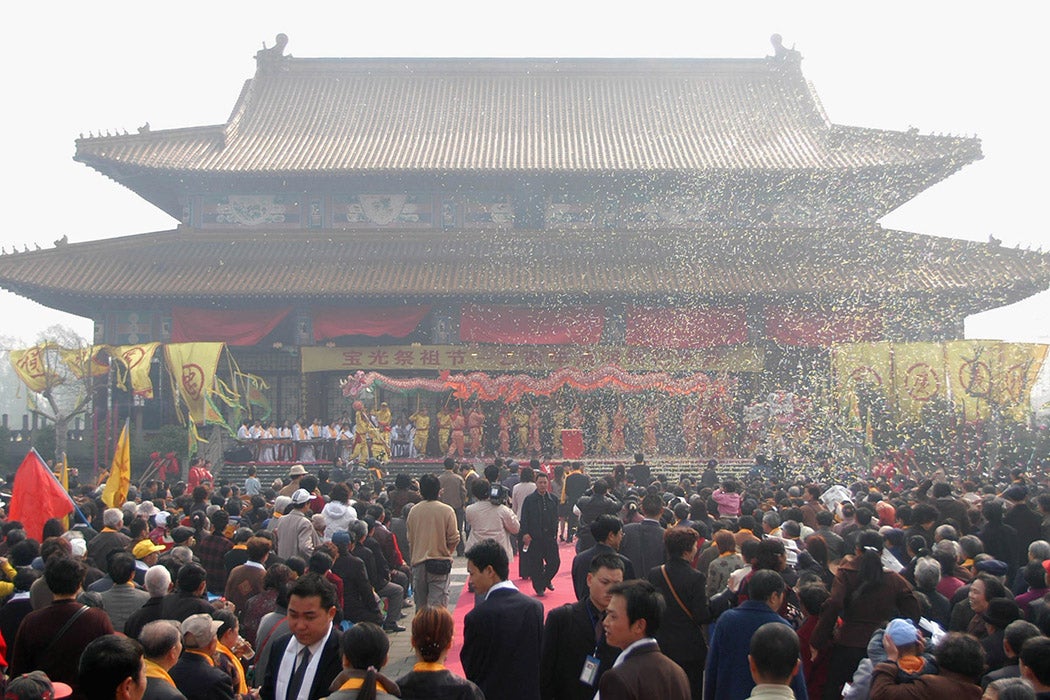Folk festivals tied to agricultural cycles have a long history in China. Starting with the establishment of the Great Beginning Calendar by Han Dynasty Emperor Wudi in 104 BCE, an empire-wide system of annual festivals gradually developed. The festivals organized family and community life in ways that follow the flow of the natural annual cycle based on the lunar calendar. As folklore scholars Fang Xiao, Juwen Zhang, and Bill Long write, in the twentieth century various Chinese governments worked to suppress these festivals, but today they’re coming back strong, sometimes in new forms.
In 1912, Xiao, Zhang, and Long write, the Republic of China adopted the Gregorian calendar as part of its European-style “modernization.” However, on the ground, many people kept using the lunar calendar. The new calendar was mostly confined to government offices and public schools.
The Ministry of the Interior attempted to push the issue in the late 1920s and early ’30s. It banned almanacs that included the lunar calendar and reorganized the timing of traditional holidays to conform to the Gregorian system. Police even showed up at stores that closed for the traditional New Year and forced them to open.
During the Cultural Revolution of the 1960s and ’70s, the official hostility to “old customs” only intensified. A letter published in an official outlet in 1967 decried holiday traditions like “offering to the gods, kowtowing for the New Year, treating guests with feasts, presenting gifts, eating and drinking and entertainments,” adding that “We the working class never have such dirty habits!”
Xiao, Zhang, and Long write that, in the late 1970s and the ’80s, as the government began to regard some Cultural Revolution policies as mistakes, its rhetoric shifted toward an appreciation of tradition. In 1980, it restored the traditional New Year festival.
Interest in traditional festivals really took off following China’s ratification of UNESCO’s new Convention for the Safeguarding of the Intangible Cultural Heritage in 2004. After that, the central government called for further study of traditional festivals and for the official organization of celebrations in schools and communities. In 2008 the Qingming Festival commemorating ancestors, the Dragon Boat Festival, and the Mid-Autumn Festival celebrating the harvest and the Moon became national holidays. Since 1999, people have also received seven days off work for the New Year, allowing families to reunite across long distances.
Weekly Newsletter
The festivals today include many activities that were tamped down over the previous century, from sweeping the tombs of ancestors at Qingming to setting off firecrackers for the New Year. Yet changes in lifestyles have transformed the meaning of celebrations. Today, most Chinese people’s lives are far less connected to agricultural cycles in which the festivals were once embedded. And some festivals have taken on new, modern meanings, like the Double Seventh Day, which has transformed from a celebration of young women’s skills in managing a household to a holiday for romantic love.
“The revitalization of traditional festivals is a process of invention of tradition and re-production of culture,” the authors write.







